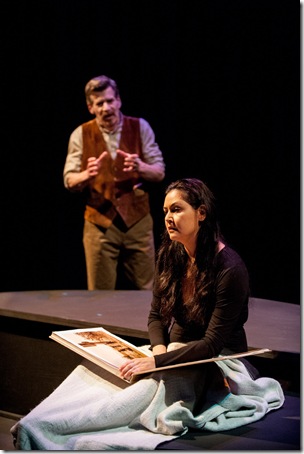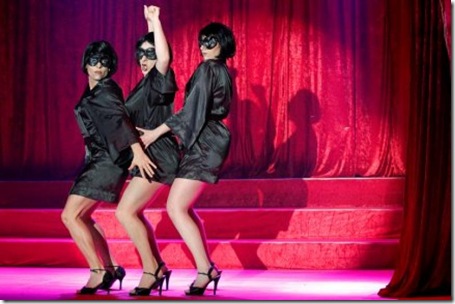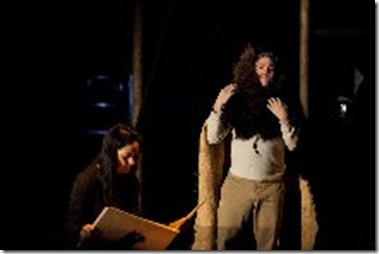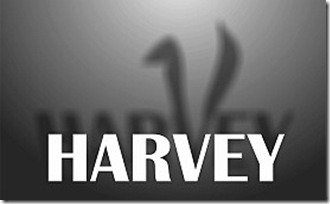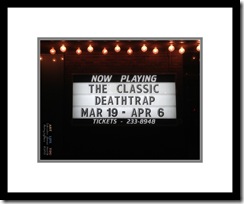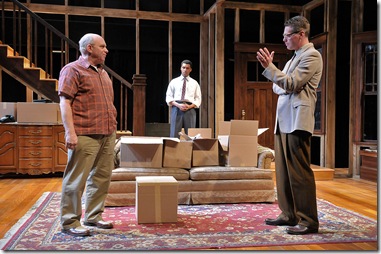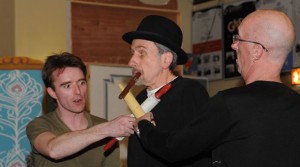Edward Curtis Project: A superb staging of a problematic script
Photo: Andrew Alexandre. Todd Duckworth (Edmund Curtis) and Quelemia Sparrow (Angeline)
The first point to be made about The Edward Curtis Project is that the production itself is exquisite.
Playwright Marie Clements’s direction is assured and imaginative — in the seamlessness of its ever-changing visual imagery, in its crucial attentiveness to mood shifts, in its balancing of naturalism with a more elusive expressionism, in the ethereal beauty of its soundscape.
Furthermore, it’s rare for back projections to be used so well. And their presence is an essential component of Clements’s attempt to revisit the influential but unreliable world of Edward Curtis who once enjoyed international fame for his allegedly “authentic” photographs of First Nations people throughout North America. These blown-up relics from nearly a century ago often dominate the Greenberg Centre stage, providing an eerie visual counterpoint to the more unsettling truths about an obsessive white man who saw it as his mission to document ‘the vanishing Indian” through the medium of the photograph but whose manipulative, orchestrated images constituted an ongoing lie.
